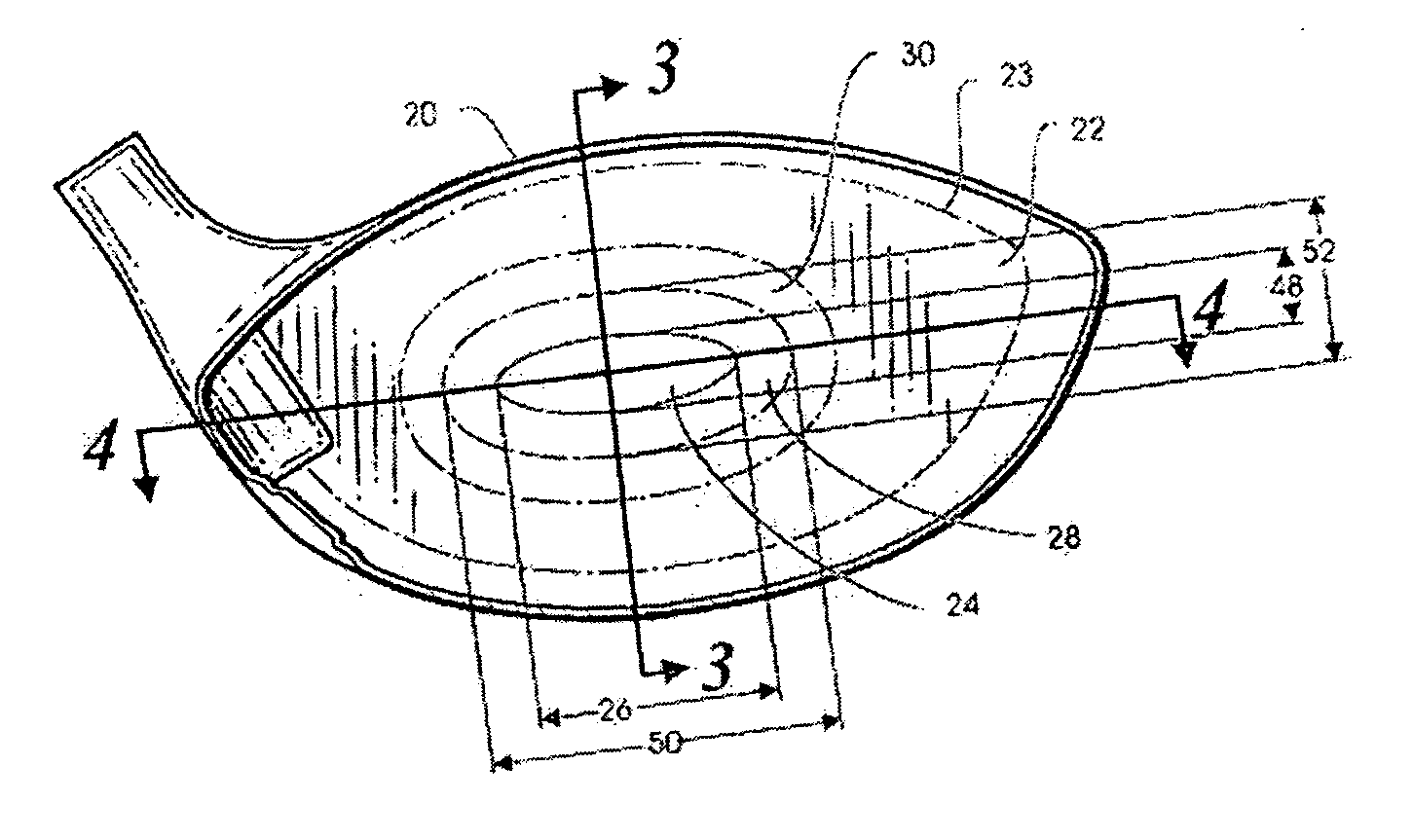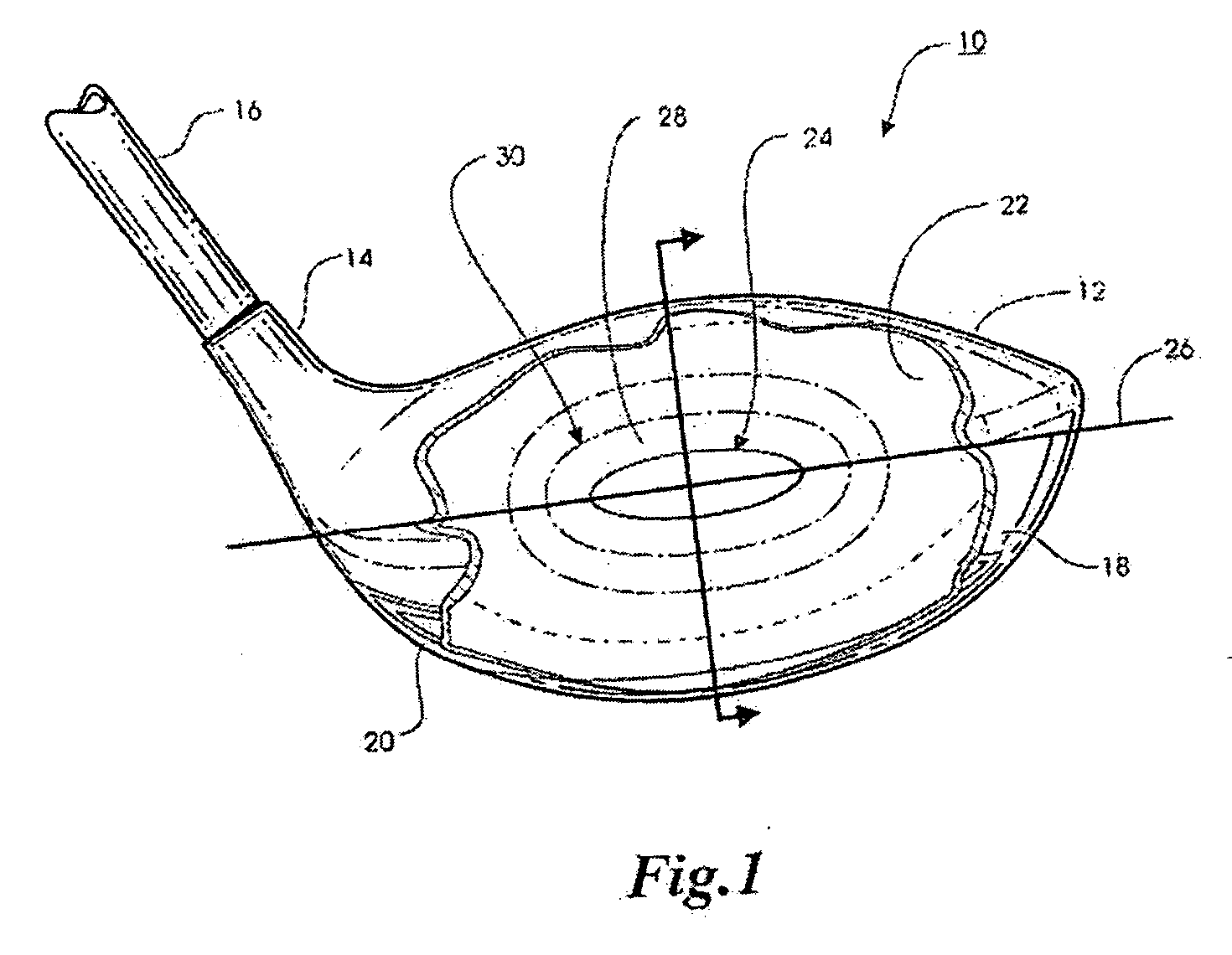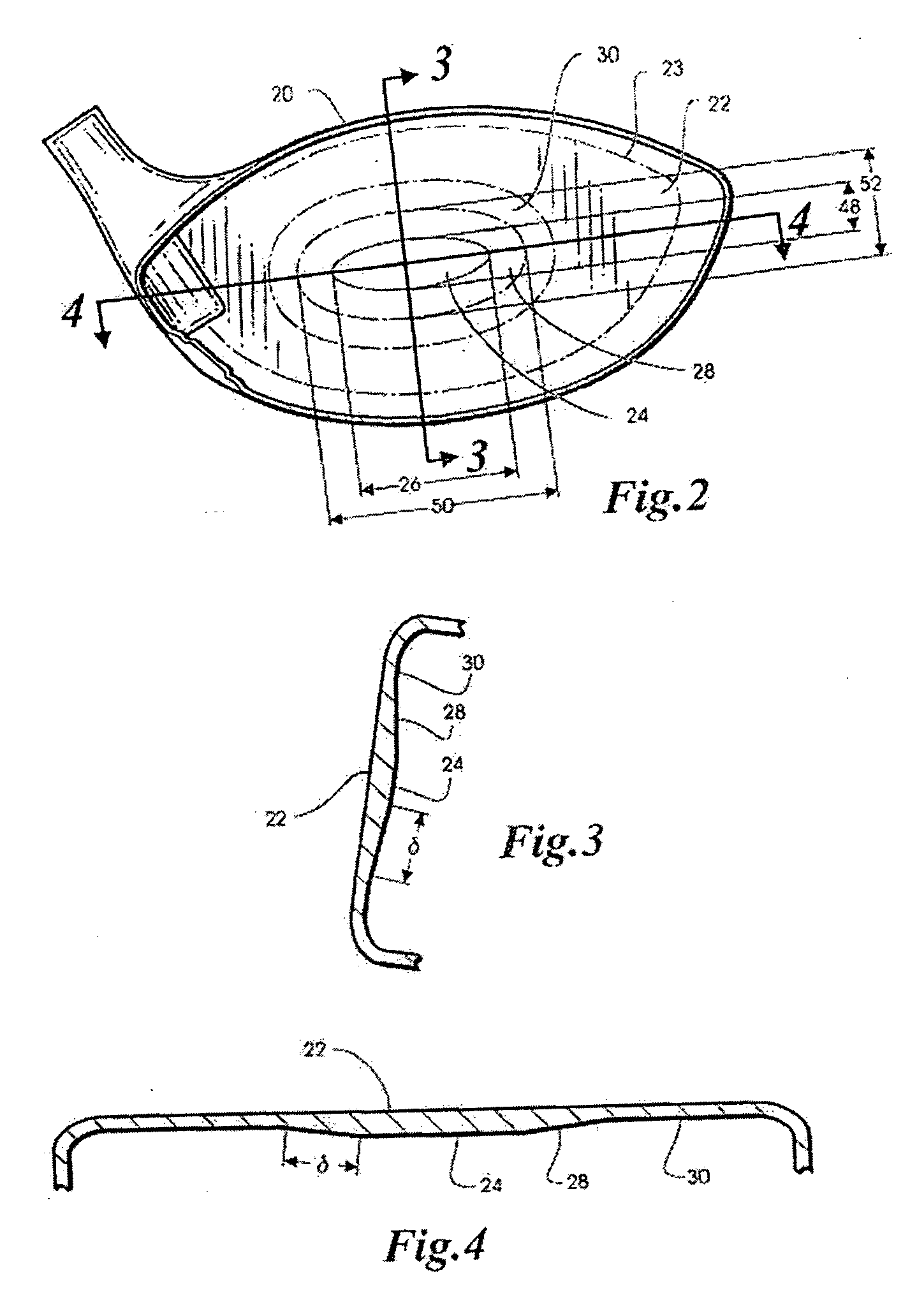Method of manufacturing a golf club head with a variable thickness face
a golf club and variable thickness technology, applied in the field of golf club head manufacturing, can solve the problems of face that is prone to fatigue cracks, cannot be properly machined on a lathe, and the formation of an elliptical reinforced region presents special problems, so as to achieve the effect of varying the thickness of the face inser
- Summary
- Abstract
- Description
- Claims
- Application Information
AI Technical Summary
Benefits of technology
Problems solved by technology
Method used
Image
Examples
Embodiment Construction
[0014] Referring to FIG. 1, a golf club 10 includes a head 12, a hosel 14 and a shaft 16. Head 12 includes a hollow body 18 made of a metal material such as titanium. Hollow body 18 is formed as a shell 20, which may be assembled from a series of forged pieces but, in the illustrative embodiment, comprises a titanium investment casting. A face plate 22 is attached by conventional means such as plasma or electron beam welding to a corresponding opening 23 (FIG. 2) in shell 20 to form hollow body 18. Face plate 22 may be a conventional forged blank but, in the illustrative embodiment, comprises a rolled sheet titanium blank that is machined prior to welding to shell 20 as described more fully hereinafter.
[0015] As noted hereinbefore, because a golfer's swing tends to vary more in the heel-toe direction than it does up or down, the inventor of the present invention determined that the most efficient reinforcement would be a thickened region that is preferably elliptical and oriented s...
PUM
| Property | Measurement | Unit |
|---|---|---|
| aspect ratio | aaaaa | aaaaa |
| aspect ratio | aaaaa | aaaaa |
| distance | aaaaa | aaaaa |
Abstract
Description
Claims
Application Information
 Login to View More
Login to View More - R&D
- Intellectual Property
- Life Sciences
- Materials
- Tech Scout
- Unparalleled Data Quality
- Higher Quality Content
- 60% Fewer Hallucinations
Browse by: Latest US Patents, China's latest patents, Technical Efficacy Thesaurus, Application Domain, Technology Topic, Popular Technical Reports.
© 2025 PatSnap. All rights reserved.Legal|Privacy policy|Modern Slavery Act Transparency Statement|Sitemap|About US| Contact US: help@patsnap.com



